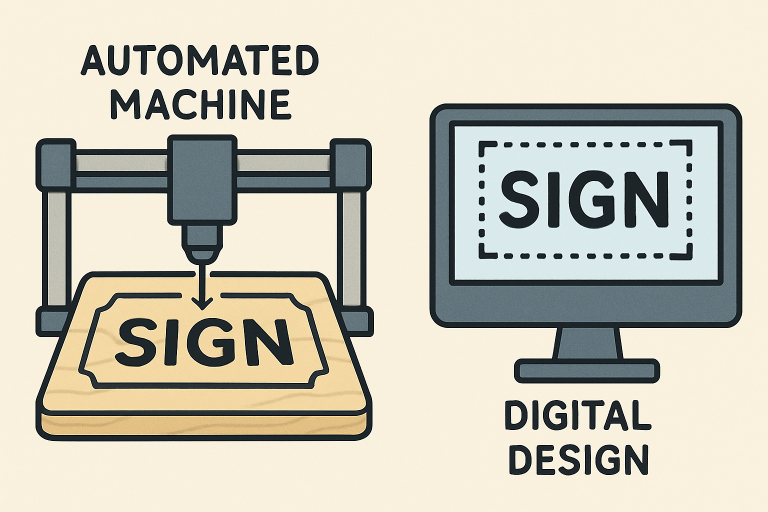How New Technology Is Transforming Sign Manufacturing
The sign manufacturing industry has entered a new era driven by rapid technological innovation. CNC routers, UV printers, and laser cutters have improved the speed and quality of sign production. Previously, many steps required manual labor and time. Now, sign shops use these advancements to produce custom signs at an unprecedented scale.
A key enabler for streamlining these processes is investing in sign manufacturing software that acts as the operational backbone for everything from order intake to production scheduling and job tracking. This software empowers teams to manage workflows efficiently, connect digital design directly to automated machinery, and maintain high quality with real-time monitoring.
The Shift Toward Automation and Digital Design
Recent years show a shift from manual sign-making to automated, digital processes. Digital tools help designers quickly create, revise, and share ideas for instant client feedback. Final files then go to manufacturing, where automated machinery produces signs with little human help. Automation reduces errors and waste, increasing speed and sustainability. Linking digital designs to production enhances scalability and helps meet deadlines. This evolution enables businesses to exceed customer expectations and reduce costs, as noted by McKinsey in its discussion on smart manufacturing.

Collaborative Workflows for Teams
Modern sign manufacturing’s efficiency depends on communication and teamwork. Cloud-based platforms unify design assets, updates, and feedback, ensuring all team members, remote or in-house, have access to the latest information, reducing mistakes and speeding decisions. Clear workflows guide complex projects from start to finish, aligning milestones and goals for quicker cycle times and better client experiences. Forbes emphasizes that cross-functional collaboration minimizes rework and enhances results.
Real-Time Project Tracking: Reducing Bottlenecks
Real-time project tracking reduces bottlenecks in the sign industry. Project managers can assign tasks, monitor progress, and address issues via dashboards that integrate with manufacturing systems. Clients receive updates and approve changes, building trust and alignment. This oversight improves delivery accuracy and resource use. Companies can quickly adapt to changing priorities or supply issues, offering resilience hard to achieve with traditional systems. Overall, it streamlines from design approval to installation.
Sustainability Strategies in Sign Production
The drive for environmental responsibility is changing sign-making. Manufacturers now use recycled substrates, water-based inks, and energy-efficient machinery to reduce impact, driven by regulation and consumer demand. Sustainable strategies minimize waste and attract eco-conscious clients, with green signage trends expected to grow as clients and communities favor environmentally friendly solutions.
Overcoming Common Manufacturing Challenges
Despite advances, sign manufacturers face obstacles like unpredictable supply chains, last-minute design changes, and changing market expectations. Overcoming these requires adaptability—strong communication, documented procedures, and flexible technology. Workforce training is also vital; skilled employees who operate new equipment and troubleshoot problems help projects run smoothly and foster problem-solving. This resilience boosts client satisfaction and repeat business, as noted by Harvard Business Review on resilient manufacturing models.
Future Trends in the Sign Industry
The sign industry is undergoing a significant technological transformation, with artificial intelligence influencing design personalization and adaptive production scheduling. Augmented reality applications enable customers to visualize signs in real environments, resulting in more accurate proofs and fewer revisions. Companies that monitor digital trends and maintain flexible workflows are better positioned to capitalize on new business opportunities as consumer demands and technology evolve.
Moving Forward: Key Insights for Sign Makers
The sign manufacturing sector is undergoing significant changes due to advancements in automation, sustainability, and digitalization. These advancements enable businesses to enhance efficiency and customer satisfaction. To thrive, companies must adopt agile strategies, invest in workforce development, and stay updated on technology trends, ensuring they remain competitive in the market.


